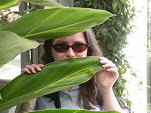
Although I usually go to see the plants, and mainly those in and around the conservatory, occasionally I wonder the grounds at Longwood as well, and I always wonder what it would have been like to live on the estate. While specimens like this Dogwood tree in fruit are spectacular in their own right, there is much more to the place than the cultivated portions.
Here is a virtual tour of just a few of the highlights.

A lovely Italian style portico off the pump house at the main fountain garden, one of a few enormous fountain systems on the property built in the early 1900's. The portico includes built in benches, were you might sit and rest from the sun, while considering the peace of the trees and birds.

Also part of the Main Fountain Garden, these fellows are getting on in years. Currently they are not in use pending restoration, but the surrounding fountains are still in operation. This garden includes colored lights, used in flashing patterns set to music during their Festival of Fountains. According to the Longwood website, the most powerful jet in this garden reaches a height of 130 feet.
Imagine having a picnic here on the grass, complete with a bottle of Chianti and gentle violin notes on the breeze. Perhaps after you might retire to the portico to relax against the benches and discuss the day's events, or the upcoming evening.

Among several architectural and foliage wonders, the conservatory includes a large ballroom, lavishly appointed with (walnut?) parquet floor, fabric paneled walls, marble trims and etched glass ceiling (above), not to mention its breathtaking views of the conservatory (below). The conservatory also houses an Aeolian Pipe Organ, with the console instrumentation in the ballroom itself and the pipes behind one wall of the ballroom. The wall has openings into the pipe chambers, hence the fabric wall coverings. It is...nothing short of spectacular. The custom-built monster consists of over 10,000 pipes and is the largest of its kind ever constructed. It is currently being restored. You can see the pipes but they do not play it. Personally, I would love nothing more than to hear it played, and can't wait for the opportunity.

Perhaps after attending the ball, you may take a stroll through the Conservatory...

...And then out into the grounds. While pausing to admire the Chinese anemone (A. tomentosa), you might look up to discover you have left behind your European vacation, only to find yourself in a fairy tale.

Rapunzel would have been proud of this tower. The Chimes Tower houses the Longwood estate's Carillon, which was also fairly recently restored. For more information on the history and construction of the organ and carillon, check this page.
Perhaps, though, you may find this tower is not Rapunzel's home, but home to the mythological beings. Whatever am I on about? Well, the place seems to be infested with nymphs (see below).

I suppose hemlock trees attract them.


